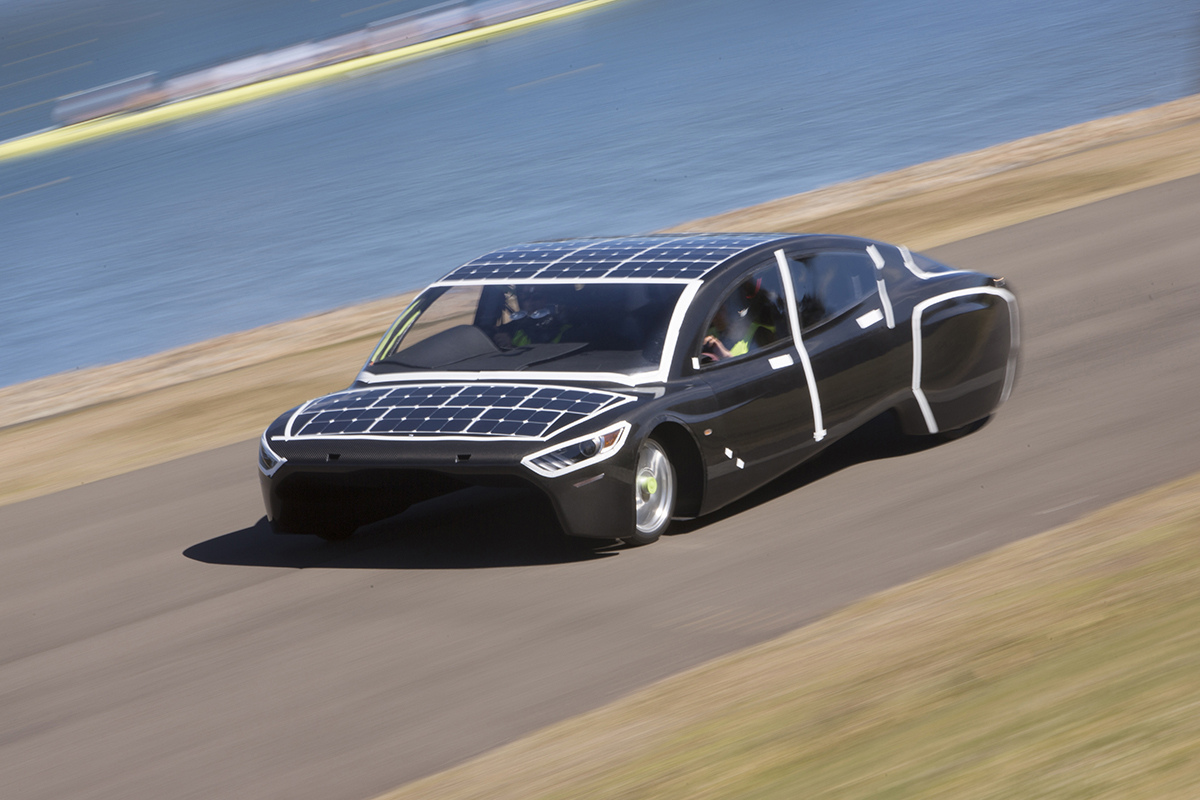Solar-Powered Cars to Compete in Harrowing Race Across the Australian Outback
The car, which was designed and built by engineering students from the University of New South Wales (UNSW), departed Sydney, Australia, on Sept. 20 and will travel about 2,700 miles (4,300 kilometers) to Darwin, on the continent's northern coast. This scenic route allows the team to test the car, and serves as a regional outreach tour, introducing their fellow highway drivers to the car's futuristic design.
Then, on Oct. 8, Violet will take part in the 30th Bridgestone World Solar Challenge, competing against 47 teams representing 21 nations. [Top 10 Inventions That Changed the World]
The race will take them from Darwin in the Northern Territories to Adelaide in South Australia, covering 1,877 miles (3,021 km). Though the event is scheduled to last from Oct. 8 to Oct. 15, the winner is expected to cross the finish line in Adelaide's Victoria Square in the early hours of Oct. 12, officials with the World Solar Challenge announced in a statement.
Violet is the sixth iteration of a solar-powered race car produced by UNSW's Sunswift team, which formed in 1995 to compete in the World Solar Challenge. Described by UNSW representatives as "a four-seater sedan" and larger than previous generations of Sunswift's solar race cars, Violet was deliberately crafted to resemble commercially produced vehicles, in order to showcase solar technology as a potential energy source for practical, daily use in transportation, Sunswift representatives explained on the group's website.
With a shell made of carbon fiber, the car weighs about 880 lbs. (400 kilograms) and it uses about 7 kilowatts of horsepower at 68 mph (110 km/h) — "as much power as a four-slice toaster," Sunswift team leader Simba Kuestler said in a statement.

Clean energy and comfort
Lined with solar panels on its roof and hood, Violet can travel for 497 miles (800 km) on power generated by its rooftop panels alone, and it can run for 249 miles (400 km) on solar power stored in its lithium batteries, with a maximum speed of 81 mph (130 km/h), according to UNSW representatives.
However, Violet was also designed for comfort. It includes numerous features associated with consumer vehicles, such as an entertainment system, storage space in the front and rear, reverse camera parking sensors, air conditioning, an interactive dashboard display with GPS "and many more," according to the Sunswift website.
Sign up for the Live Science daily newsletter now
Get the world’s most fascinating discoveries delivered straight to your inbox.
"There's even Wi-Fi aboard," Kuestler added.
But once the race begins, more than Violet's Wi-Fi performance will be put to the test. Teams will drive as far as they can until 5 p.m. local time, when they must stop and camp for the night, wherever they may be, race officials explained on the World Solar Challenge website. There are also seven mandatory checkpoints where teams can perform basic maintenance and receive updates about their field position and weather conditions, according to the website.
Violet suffered a minor mishap during recent road tests prior to the team's departure for Darwin, when a suspension bolt broke during braking tests. But the Sunswift team redoubled their efforts to fix the damage, reinforce the car's structure and still meet the deadline for the race, Mark Hoffman, UNSW's dean of engineering, said in a statement.
"That's what an engineering degree should be about — learning about demanding, real-world challenges," Hoffman said.
Original article on Live Science.

Mindy Weisberger is an editor at Scholastic and a former Live Science channel editor and senior writer. She has reported on general science, covering climate change, paleontology, biology and space. Mindy studied film at Columbia University; prior to Live Science she produced, wrote and directed media for the American Museum of Natural History in New York City. Her videos about dinosaurs, astrophysics, biodiversity and evolution appear in museums and science centers worldwide, earning awards such as the CINE Golden Eagle and the Communicator Award of Excellence. Her writing has also appeared in Scientific American, The Washington Post and How It Works Magazine. Her book "Rise of the Zombie Bugs: The Surprising Science of Parasitic Mind Control" will be published in spring 2025 by Johns Hopkins University Press.









